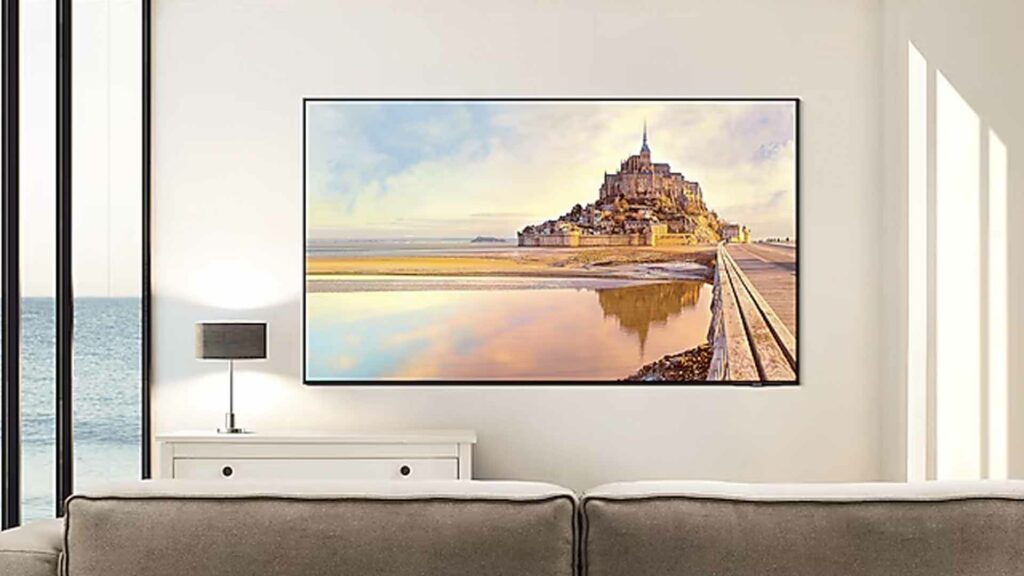Samsung’s 98-inch QN90D Neo QLED TV, which usually sells for $15,000, is now available for $10,000 — a $5,000 discount.
This TV rivals OLED in contrast and motion handling and exceeds it in brightness. The placement of its ports can make setup a bit tricky for a screen this large.
It’s rare for a TV’s picture to be this impressive, but the QN90D stood out — especially due to its size and brightness. Samsung sent the 98-inch model to the ZDNET lab in Louisville. At $15,000, it was the most expensive TV tested.
If your budget can handle a $10K+ TV, then yes — it lives up to its price.
There are cheaper 98-inch TVs available, like TCL’s QM8 Mini-LED, which costs much less. But Samsung’s mini-LED with Quantum Dot overlay (Neo QLED) creates a higher-quality display with better light distribution.
This combination results in brighter whites, darker blacks, and better color. The picture was sharp, with bright highlights, vivid colors, and true blacks. The UHD micro dimming zones delivered incredible contrast.
In some cases, dark areas became so dark that fine details were hard to see. A black motorcyclist on a sunny road, for example, appeared as one solid silhouette. This would be tough for any TV to render clearly. Samsung’s 8K QN990C might do better — but it costs $43,000.
The QN90D’s brightness and color range were impressive. The colors felt intense, especially logos like Netflix’s red glow. Switching from “Dynamic” mode helps reduce the oversaturation.
Viewing angles were solid. Even from a tight angle, the screen held its sharpness, with only minor color loss.
The built-in speakers delivered strong sound, even without a soundbar. Watching Kandahar on Prime, the volume never needed to go past 12. Samsung’s OTS+ tech tracks screen movement and adjusts the sound for a 3D-like effect.
Changing the audio to “Amplify” made whispered dialogue clearer — useful in films like Dune 2. This setting improved clarity more than volume.
Color variation stood out in desert scenes, from rocks and skin tones to Dune’s red “spice.” Kandahar’s sunny drone shots looked especially crisp.
Only three default picture settings were changed, thanks to Samsung’s AI features. Turning on “Intelligent Mode” disables standard modes (Dynamic, Eco, etc.) and replaces them with “Optimized,” “Eye Comfort,” and “AI Customization.”
In AI Customization, users choose their preferred visuals for movies, sports, and general content. The Gen2 AI processor then applies these to deliver the best overall result. This mode gave the most satisfying picture.
The remote is small, with rocker buttons that push forward or back. It takes a moment to get used to but is easy to operate. The built-in solar panel eliminates the need for batteries or charging.
Voice control (Bixby, Alexa, or Google Assistant) is built in. The remote isn’t backlit, which may be a downside at night.
A common issue is the input layout. All ports — HDMI, USB, etc. — are located on the back right, which can be awkward on a large TV. Previous models like the QN95C had a OneConnect box to simplify wiring. That’s missing here.
Though the port placement isn’t ideal, the overall picture and sound quality are excellent. At $15,000, this TV has every reason to perform at a high level — and it does. At $10,000, it’s a better value.
If you’re looking for a large-screen experience and have the budget, the QN90D delivers. For more affordable options, consider TCL’s QM8 or Q6.
